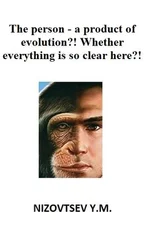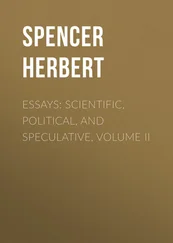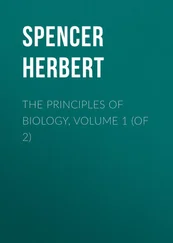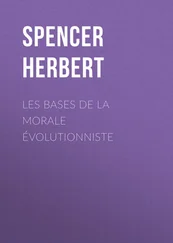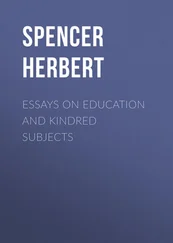Herbert Spencer - The Factors of Organic Evolution
Здесь есть возможность читать онлайн «Herbert Spencer - The Factors of Organic Evolution» — ознакомительный отрывок электронной книги совершенно бесплатно, а после прочтения отрывка купить полную версию. В некоторых случаях можно слушать аудио, скачать через торрент в формате fb2 и присутствует краткое содержание. Жанр: Философия, foreign_antique, foreign_prose, на английском языке. Описание произведения, (предисловие) а так же отзывы посетителей доступны на портале библиотеки ЛибКат.
- Название:The Factors of Organic Evolution
- Автор:
- Жанр:
- Год:неизвестен
- ISBN:нет данных
- Рейтинг книги:3 / 5. Голосов: 1
-
Избранное:Добавить в избранное
- Отзывы:
-
Ваша оценка:
- 60
- 1
- 2
- 3
- 4
- 5
The Factors of Organic Evolution: краткое содержание, описание и аннотация
Предлагаем к чтению аннотацию, описание, краткое содержание или предисловие (зависит от того, что написал сам автор книги «The Factors of Organic Evolution»). Если вы не нашли необходимую информацию о книге — напишите в комментариях, мы постараемся отыскать её.
The Factors of Organic Evolution — читать онлайн ознакомительный отрывок
Ниже представлен текст книги, разбитый по страницам. Система сохранения места последней прочитанной страницы, позволяет с удобством читать онлайн бесплатно книгу «The Factors of Organic Evolution», без необходимости каждый раз заново искать на чём Вы остановились. Поставьте закладку, и сможете в любой момент перейти на страницу, на которой закончили чтение.
Интервал:
Закладка:
So too, in the third place, with certain alterations in the connections of parts. According to the greater or smaller demands made on this or that limb, the muscles moving it may be augmented or diminished in bulk; and, if there is inheritance of changes so wrought, the limb may, in course of generations, be rendered larger or smaller. But changes in the arrangements or attachments of muscles cannot be thus accounted for. It is found, especially at the extremities, that the relations of tendons to bones and to one another are not always the same. Variations in their modes of connection may occasionally prove advantageous, and may thus become established. Here again, then, we have a class of structural changes to which Mr. Darwin's hypothesis gives us the key, and to which there is no other key.
Once more there are the phenomena of mimicry. Perhaps in a more striking way than any others, these show how traits which seem inexplicable are explicable as due to the more frequent survival of individuals that have varied in favorable ways. We are enabled to understand such marvelous simulations as those of the leaf-insect, those of beetles which “resemble glittering dew-drops upon the leaves;” those of caterpillars which, when asleep, stretch themselves out so as to look like twigs. And we are shown how there have arisen still more astonishing imitations – those of one insect by another. As Mr. Bates has proved, there are cases in which a species of butterfly, rendered so unpalatable to insectivorous birds by its disagreeable taste that they will not catch it, is simulated in its colors and markings by a species which is structurally quite different – so simulated that even a practiced entomologist is liable to be deceived: the explanation being that an original slight resemblance, leading to occasional mistakes on the part of birds, was increased generation after generation by the more frequent escape of the most-like individuals, until the likeness became thus great.
But now, recognizing in full this process brought into clear view by Mr. Darwin, and traced out by him with so much care and skill, can we conclude that, taken alone, it accounts for organic evolution? Has the natural selection of favourable variations been the sole factor? On critically examining the evidence, we shall find reason to think that it by no means explains all that has to be explained. Omitting for the present any consideration of a factor which may be distinguished as primordial, it may be contended that the above-named factor alleged by Dr. Erasmus Darwin and by Lamarck, must be recognized as a co-operator. Utterly inadequate to explain the major part of the facts as is the hypothesis of the inheritance of functionally-produced modifications, yet there is a minor part of the facts, very extensive though less, which must be ascribed to this cause.
When discussing the question more than twenty years ago ( Principles of Biology , § 166), I instanced the decreased size of the jaws in the civilized races of mankind, as a change not accounted for by the natural selection of favourable variations; since no one of the decrements by which, in thousands of years, this reduction has been effected, could have given to an individual in which it occurred, such advantage as would cause his survival, either through diminished cost of local nutrition or diminished weight to be carried. I did not then exclude, as I might have done, two other imaginable causes. It may be said that there is some organic correlation between increased size of brain and decreased size of jaw: Camper's doctrine of the facial angle being referred to in proof. But this argument may be met by pointing to the many examples of small-jawed people who are also small-brained, and by citing not infrequent cases of individuals remarkable for their mental powers, and at the same time distinguished by jaws not less than the average but greater. Again, if sexual selection be named as a possible cause, there is the reply that, even supposing such slight diminution of jaw as took place in a single generation to have been an attraction, yet the other incentives to choice on the part of men have been too many and great to allow this one to weigh in an adequate degree; while, during the greater portion of the period, choice on the part of women has scarcely operated: in earlier times they were stolen or bought, and in later times mostly coerced by parents. Thus, reconsideration of the facts does not show me the invalidity of the conclusion drawn, that this decrease in size of jaw can have had no other cause than continued inheritance of those diminutions consequent on diminutions of function, implied by the use of selected and well-prepared food. Here, however, my chief purpose is to add an instance showing, even more clearly, the connexion between change of function and change of structure. This instance, allied in nature to the other, is presented by those varieties, or rather sub-varieties, of dogs, which, having been household pets, and habitually fed on soft food, have not been called on to use their jaws in tearing and crunching, and have been but rarely allowed to use them in catching prey and in fighting. No inference can be drawn from the sizes of the jaws themselves, which, in these dogs, have probably been shortened mainly by selection. To get direct proof of the decrease of the muscles concerned in closing the jaws or biting, would require a series of observations very difficult to make. But it is not difficult to get indirect proof of this decrease by looking at the bony structures with which these muscles are connected. Examination of the skulls of sundry indoor dogs contained in the Museum of the College of Surgeons, proves the relative smallness of such parts. The only pug-dog's skull is that of an individual not perfectly adult; and though its traits are quite to the point they cannot with safety be taken as evidence. The skull of a toy-terrier has much restricted areas of insertion for the temporal muscles; has weak zygomatic arches; and has extremely small attachments for the masseter muscles. Still more significant is the evidence furnished by the skull of a King Charles's spaniel, which, if we allow three years to a generation, and bear in mind that the variety must have existed before Charles the Second's reign, we may assume belongs to something approaching to the hundredth generation of these household pets. The relative breadth between the outer surfaces of the zygomatic arches is conspicuously small; the narrowness of the temporal fossæ is also striking; the zygomata are very slender; the temporal muscles have left no marks whatever, either by limiting lines or by the character of the surfaces covered; and the places of attachment for the masseter muscles are very feebly developed. At the Museum of Natural History, among skulls of dogs there is one which, though unnamed, is shown by its small size and by its teeth, to have belonged to one variety or other of lap-dogs, and which has the same traits in an equal degree with the skull just described. Here, then, we have two if not three kinds of dogs which, similarly leading protected and pampered lives, show that in the course of generations the parts concerned in clenching the jaws have dwindled. To what cause must this decrease be ascribed? Certainly not to artificial selection; for most of the modifications named make no appreciable external signs: the width across the zygomata could alone be perceived. Neither can natural selection have had anything to do with it; for even were there any struggle for existence among such dogs, it cannot be contended that any advantage in the struggle could be gained by an individual in which a decrease took place. Economy of nutrition, too, is excluded. Abundantly fed as such dogs are, the constitutional tendency is to find places where excess of absorbed nutriment may be conveniently deposited, rather than to find places where some cutting down of the supplies is practicable. Nor again can there be alleged a possible correlation between these diminutions and that shortening of the jaws which has probably resulted from selection; for in the bull-dog, which has also relatively short jaws, these structures concerned in closing them are unusually large. Thus there remains as the only conceivable cause, the diminution of size which results from diminished use. The dwindling of a little-exercised part has, by inheritance, been made more and more marked in successive generations.
Читать дальшеИнтервал:
Закладка:
Похожие книги на «The Factors of Organic Evolution»
Представляем Вашему вниманию похожие книги на «The Factors of Organic Evolution» списком для выбора. Мы отобрали схожую по названию и смыслу литературу в надежде предоставить читателям больше вариантов отыскать новые, интересные, ещё непрочитанные произведения.
Обсуждение, отзывы о книге «The Factors of Organic Evolution» и просто собственные мнения читателей. Оставьте ваши комментарии, напишите, что Вы думаете о произведении, его смысле или главных героях. Укажите что конкретно понравилось, а что нет, и почему Вы так считаете.

